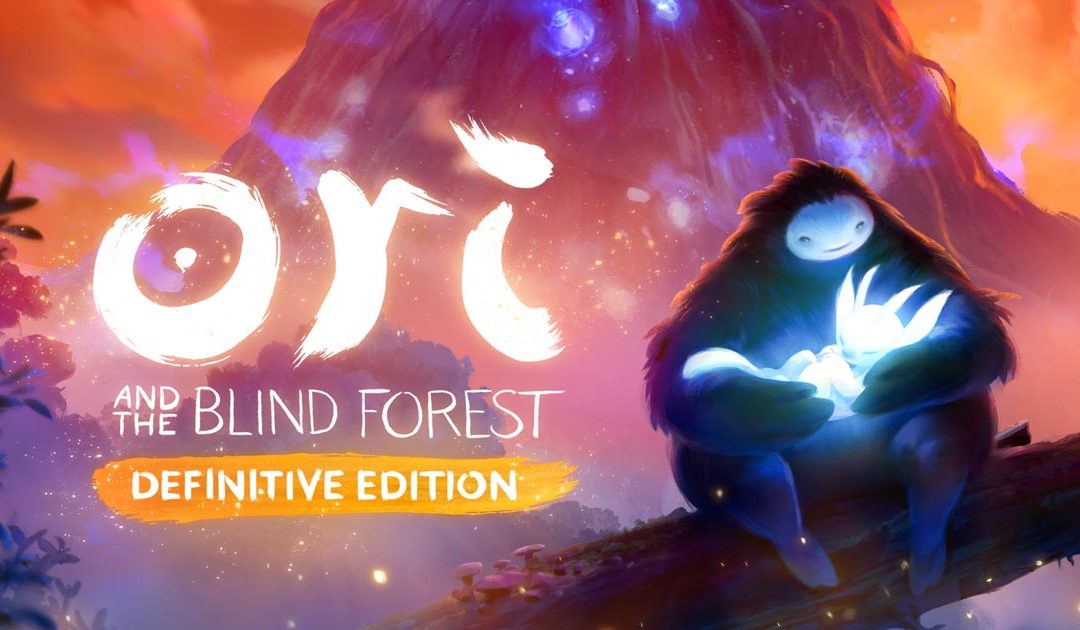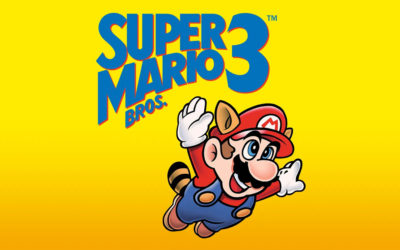Ori and the Blind Forest is not an indie game. Sure, you may not have ever heard of the Austrian video game developer Moon Studios, and if you haven’t played Ori and the Blind Forest or it’s sequel, you haven’t played another game they made. The thing is, Ori (and the Blind Forest) has the initial look, feel, and price point of an indie title. It’s not. Why does this matter? I dunno I needed intro that turns your world upside down before I gush about how great this masterpiece is.
“Video games can never be art”
~Roger Ebert, a very wrong, lying, son of a bitch.
Roger Ebert. Fuck that guy. Did he take it back? I thought he took it back. I’m not going to bother looking that up.
As I mentioned, Ori and the Blind Forest was developed by Moon Studios, and published by Microsoft Studios. At first glance, and the fact that it’s on Steam, Nintendo Switch, and Xbox One, you might think it’s an artsy indie title.
Disclaimer: There’s absolutely nothing wrong with indie games. Some of my best friends are indie games. Many indie games are incredible, and I’ll definitely be reviewing them in droves as I rake my fingers across my backlog.
The distinction for Ori, however, makes it somewhat of an enigma. It’s a game published by a major publisher that is also a 2D side-scroller metroidvania with very challenging platforming, and a very ambitious art style? Where’s the in-game currency? Where’s the microtransactions? Why isn’t this exclusively on the Xbox One?
Thank the maker that Ori is widely available and doesn’t stink with the taint that so many modern games have.
Disclaimer: There’s absolutely nothing wrong with modern games. Some of my best friends are modern games. Many modern games are incredible, and I’ll definitely be reviewing swarms of them as I caress my cheeks across my backlog.
[wps_icon icon=”gamepad” background=”#3366cc” color=”#fff” size=”32″ padding=”10″ radius=”0″]Gameplay: 9/10
Ori and the Blind Forest is a metroidvania. What’s a metroidvania? Dear, sweet, innocent child. Your naiveté amuses me.
A metroidvania is a game that… I dunno. It’s sort of like Metroid. Or it’s sort of like Castlevania. It’s a metroidvania. Metroidvanias are games about exploration, and earning new capabilities or finding new permanent power ups that will help you further explore the world. Most metroidvanias involve you running across a path you can’t reach, or a door you can’t open. Later on, you find the thing that will help you reach the path or open said door, and you can work your way back to discover new areas and find more abilities. There’s usually a fair amount of back tracking in a Metroidvania, but usually each time you have to revisit an area, you are more equipped than you were the first time you were there. Older areas feel more familiar, and you feel safer and more in control, which makes newer areas feel even more foreign.
Ori takes the metroidvania mechanic and adds very precise platforming (it almost, almost feels like Super Meat Boy) and makes you jump, wall jump, bash, and dash through beautiful, complex areas in order to collect objects, solve puzzles, and work your way through.
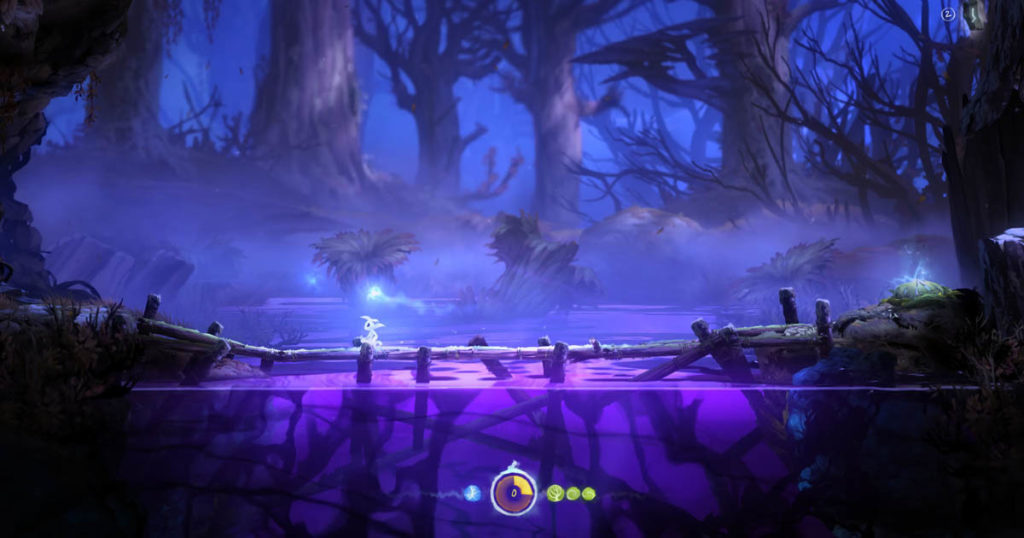
As you adventure and defeat enemies, you collect Spirit Light, which is sort of like an XP system. As you collect Spirit Light, you get Ability Points to spend on new moves and upgrades.
You are accompanied by Navi the Fairy Sein the light fairy who helps guide you, and does all of the attacking for Ori. Sein can fire little arcs of energy at enemies that are near Ori. It allows you to focus on Ori’s position and movement without worrying about aiming at enemies.
As the game progresses, and Ori and Sein gain more abilities, players need to use everything they learn to navigate the more difficult areas.
[wps_icon icon=”book” background=”#3366cc” color=”#fff” size=”32″ padding=”10″ radius=”0″]Story: 8/10
The game starts with a tale about a tree, and how the tree lost it’s child, who, guess what, is Ori.
Ori gets adopted by gentle creature that looks like a Snorlax wearing a Shyguy mask. This creature raises Ori as its own, and we see them enjoying life together in a beautiful glade.
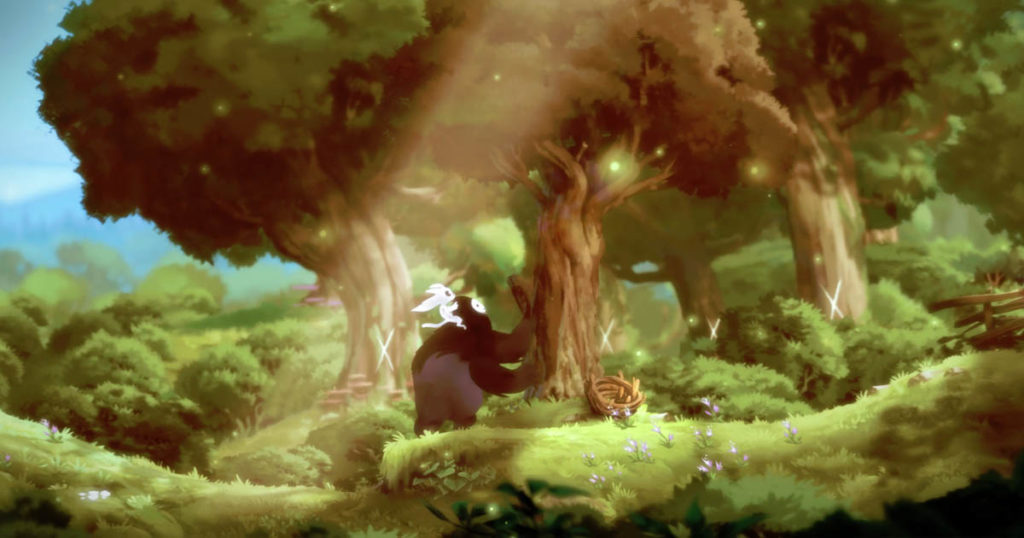
Unfortunately, something happens and the forest becomes blighted. Ori and her big chubby friend struggle to survive, and Ori is left alone in a twisted, dark forest once more.
Here, don’t let me mess it up. Just watch and enjoy.
As Ori, it’s your job to make your way through the forest, unlock your true potential, and face the cause of the blight to restore balance.
[wps_icon icon=”picture-o” background=”#3366cc” color=”#fff” size=”32″ padding=”10″ radius=”0″]Visuals: 9.5/10
Ori and the Blind Forest is beautiful. It’s just, so gosh dang beautiful. It looks like FernGully, if had redeeming qualities beyond Robin Williams and that weird overtly sexual song that the lizard sings before we never see him again. The developers made some very clever choices for the video style too – Ori is a glowing white monkey-bunny, so she’s easy to see when put against complex, dark backgrounds. The visuals are dramatically beautiful, but they rarely get in the way or make it hard to discern what is around you.
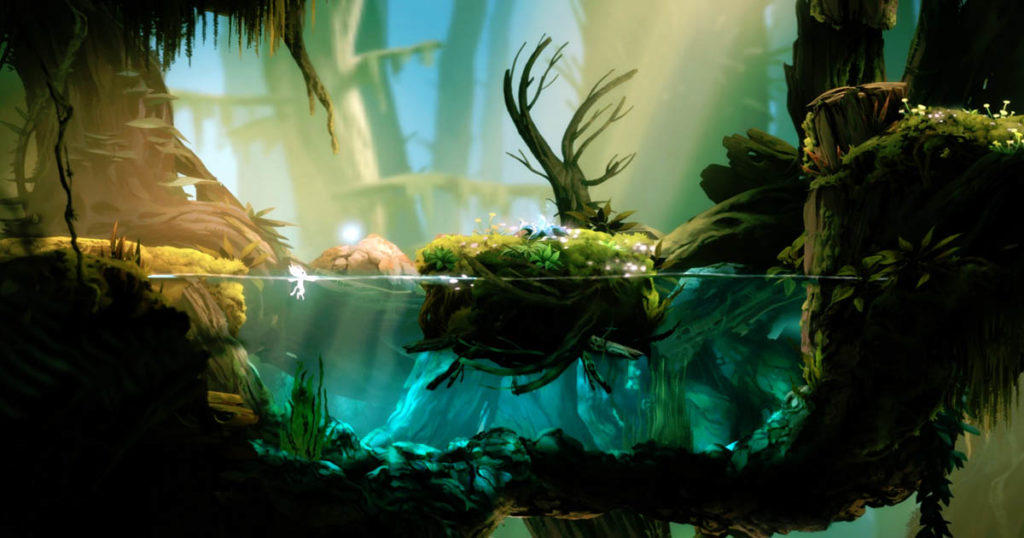
This is a game that requires your brain to take in a lot of visual information and make snap decisions based on patterns. Normally games like this need the art to be less ostentatious and more practical. Yet, Ori does a really great job at conveying objects that you can land on, interact with, and bounce off of without causing a lot of frustration.
[wps_icon icon=”music” background=”#3366cc” color=”#fff” size=”32″ padding=”10″ radius=”0″]Audio: 9/10
The sound and soundtrack for Ori fit the tone of the game perfectly. Pieces don’t necessary stand out, and other than the main theme, I didn’t end up carrying any of the tunes with me after I stopped playing. This isn’t a bad thing – not every game needs an ear worm like the Super Mario Bros theme. The soundtrack helps set the tone of each area; crescendos peak as Ori is at her finest, and somber, delicate instrumentals accent her loneliness and burdens.
The soundtrack, like the visuals, were certainly crafted with love, and great care went in to ensure that both enhanced the game, as opposed to just applying a shiny, superficial veneer.
[wps_icon icon=”support” background=”#3366cc” color=”#fff” size=”32″ padding=”10″ radius=”0″]Accessibility: 8/10
The controls for Ori feel great, once you get the hang of them. Ori is a little floaty, which you’ll feel very thankful for later on in the game. As Ori gains more abilities, her controls become more complex to handle. This isn’t a bad thing – mastering Ori’s capabilities is a big part about what makes this game feel good to play. It will, however, frustrate some players.
I mentioned Super Meat Boy earlier. If you don’t know what Super Meat Boy is, it’s a game about fast, tricky jumping. It’s a game where you die a lot. In Ori, you’ll probably die a lot. There are a lot of areas where you’ll need to sacrifice a few Oris in order to work your way through.
Fortunately, there is a clever mechanic that makes this much more tolerable, even to clumsy, fat-fingered, aged players who’s reflexes aren’t what they once were. I don’t know anybody like that, believe me.
As long as Ori has enough energy, you can generate a save point on any solid platform. This means if you die, you simply spawn back at your last save point. This is a great mechanic – you can usually drop a save point whenever you need to. There are areas in the game where energy is less plentiful, forcing you to be more conservative with your save points.
[wps_icon icon=”warning” background=”#3366cc” color=”#fff” size=”32″ padding=”10″ radius=”0″]Challenge: 9/10
Do you like Penny Arcade? I LOVE Penny Arcade. Here’s a Penny Arcade comic that will convey my feelings.
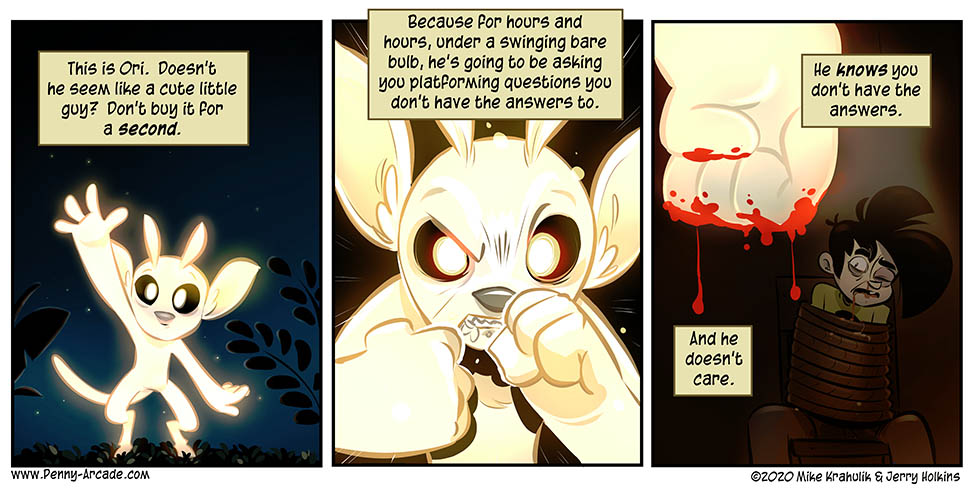
As you learn new abilities, Ori and the Blind Forest requires you to master them relatively quickly, as it applies new twists and challenges for each ability as you progress. For example, you’ll learn how to do an air dash (called a Bash) when Ori jumps past illuminated laterns and other bright objects. This manuever isn’t too difficult; Ori pauses in midair for a moment while you adjust your trajectory before she launches forward. Once you get the hang of that, the game then respectfully asks you to do this to moving light sources like fireballs that are being shot at you. Once you get used to that, you’ll need to also use this move to fire these projectiles at enemies, while also coordinating Ori’s jump.
Your fingers will protest, but it feels so good to nail a sequence juuust right after a dozen failed attempts.
Usually, a beautiful, ambitious game like this could peter-off after several hours in. The team could run out of unique ideas for the player’s moveset, start to go less hard on the visuals, or phone in an ending. Ori keeps delivering unique gimmicks and puzzles all the way through.
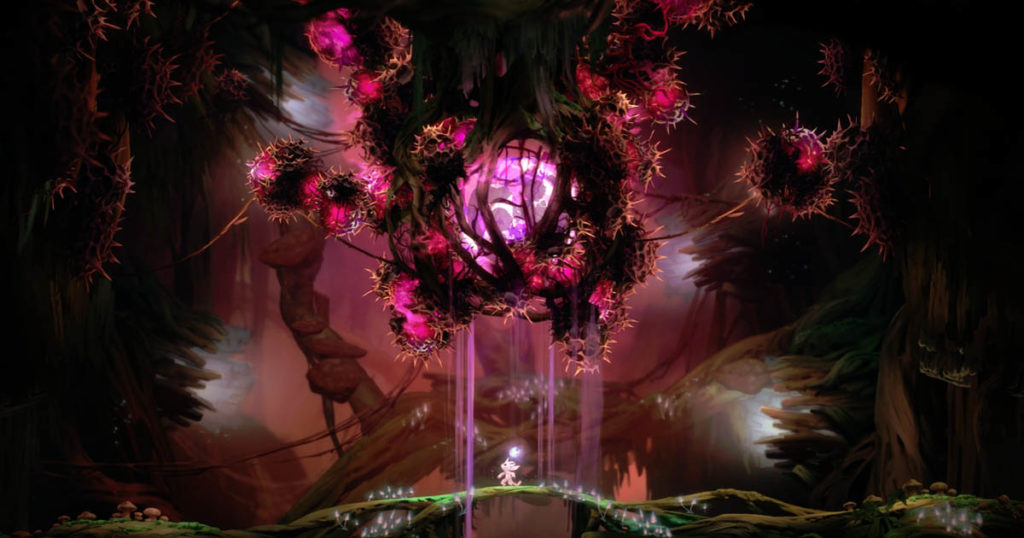
I’m a big fan of adding interesting, temporary gimmicks to an area to mix things up. For instance, one area might have you carrying a glowing orb to find your way through a dark cave. Another will have you walking on walls and ceilings.
[wps_icon icon=”repeat” background=”#3366cc” color=”#fff” size=”32″ padding=”10″ radius=”0″]Replayability: 8/10
Ori and the Blind Forest is relatively short – my first playthrough took about 5 hours. It’s an enjoyable jaunt, and it’s short enough to pick up and play like most older metroidvanias. There are so many secret areas to find and skills to acquire, and many players might not find them all on the first run.
On top of that, Ori and the Blind Forest rewards the player for a flawless, no-death run. That’s not for me, but I’m sure there are sadomasochists out there who are getting bored with rubbing a cheese grater over their nethers.
All joking aside, Ori and the Blind Forest will probably join my large selection of games I play through on a sick day, or a mental health day.
[wps_icon icon=”star-o” background=”#3366cc” color=”#fff” size=”32″ padding=”10″ radius=”0″]Uniqueness: 8.5/10
I made some comparisons for Ori and the Blind Forest. I mentioned Metroid, Castlevania, and Super Meat Boy. Ori is similar to those games, yes. I’d even say it has tonal similarities to Rayman Legends and Legend of Zelda.
There’s nothing wrong with any of this. Metroid and Castlevania have etched a unique open-world genre into 2D platforming that deserves more participants. Rayman’s beautiful hand-painted artstyle and platforming shouldn’t just exist within Rayman games. Legend of Zelda’s concept of fairy companions and talking tree-daddies has still yet to be fully explored.
Ori takes from some of the finest examples, and then elevates them in its own way. Ori’s near-perfect save mechanic allows areas to be dastardly without making them debilitating. If you die, you instantly pop back to the ledge you saved on. Ori’s moveset and platforming demands might otherwise turn off a lot of players, but the game is so forgiving that it makes you feel like you are grifting the system to accomplish your goals.
On top of that, combined with a beautiful, heartfelt story and a great twist at the end, Ori and the Blind Forest is as beautiful on the inside as it is on the outside.
[wps_icon icon=”heart-o” background=”#3366cc” color=”#fff” size=”32″ padding=”10″ radius=”0″]Personal Thoughts
Ori and the Blind Forest, not an indie game, published by Microsoft, available on a Nintendo, is a marvel of a game. It makes me realize that there is so much hope for modern gaming. There’s so much soul packed into this short foray through the brier, and I can’t wait to get to the sequel.
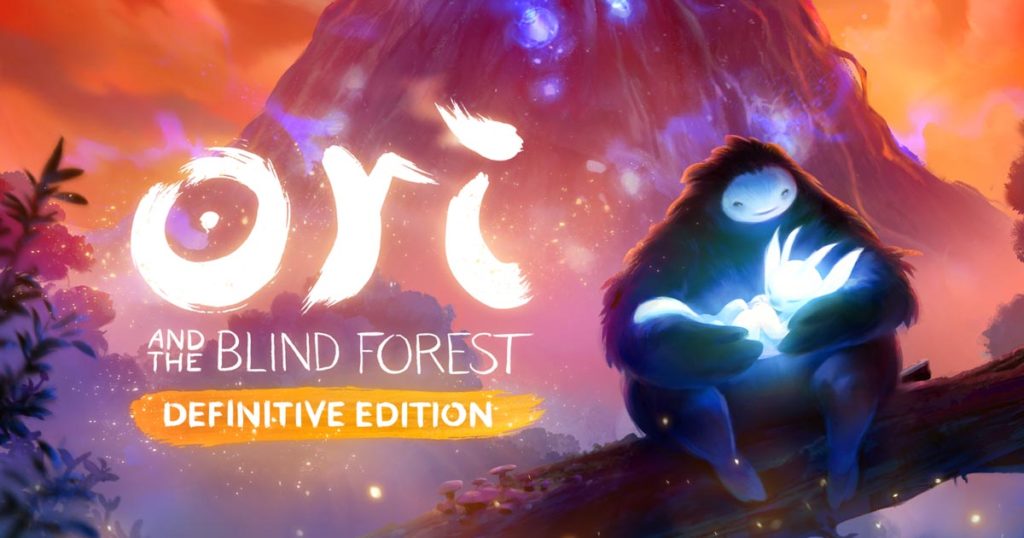
Ori and the Blind Forest was developed by Moon Studios.
Ori and the Blind Forest is also available on the PC, Xbox One, and Nintendo Switch.
Where to Get This Game:
Ori and the Blind Forest (PC - 2015)
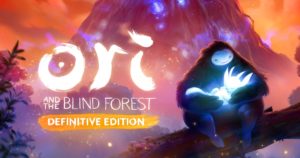
Game title: Ori and the Blind Forest
Game description: Ori and the Blind Forest was released in March, 2015 for Microsoft Windows and Xbox One. In September, 2019, it was released on the Nintendo Switch. I've played through it on the PC and Switch. Metacritic gives Ori and the Blind Forest a 88/100 for PC and XONE, and a 90/100 for Nintendo Switch.
Author: Moon Studios
-
Gameplay - 9/10
9/10
-
Story - 8/10
8/10
-
Visuals - 9.5/10
9.5/10
-
Audio - 9/10
9/10
-
Accessibility - 8/10
8/10
-
Challenge - 9/10
9/10
-
Replayability - 8/10
8/10
-
Uniqueness - 8.5/10
8.5/10
Ori and the Blind Forest is Lynk Approved
Ori and the Blind Forest is easy to miss, and it would be a shame if you let it slip by. For me, it sat in my Steam Library for years until I bought it on Switch and finally played through it.
Vibrant, visually impressive, and dreamlike, Ori is beauty wrapped around a touching, heartfelt story with challenging platforming that doesn’t slap the player around too hard. It’s a tribute to games like Metroid and Rayman Legends that adds it’s own mark to a genre that has seen far to few games.
Pros
- Gorgeous visuals and incredible music
- Great gameplay with solid controls
- Unique save mechanic that keeps the game from getting too frustrating
Cons
- Short (but sweet).
- It probably tugs too many heartstrings for my girlfriend to play it.

